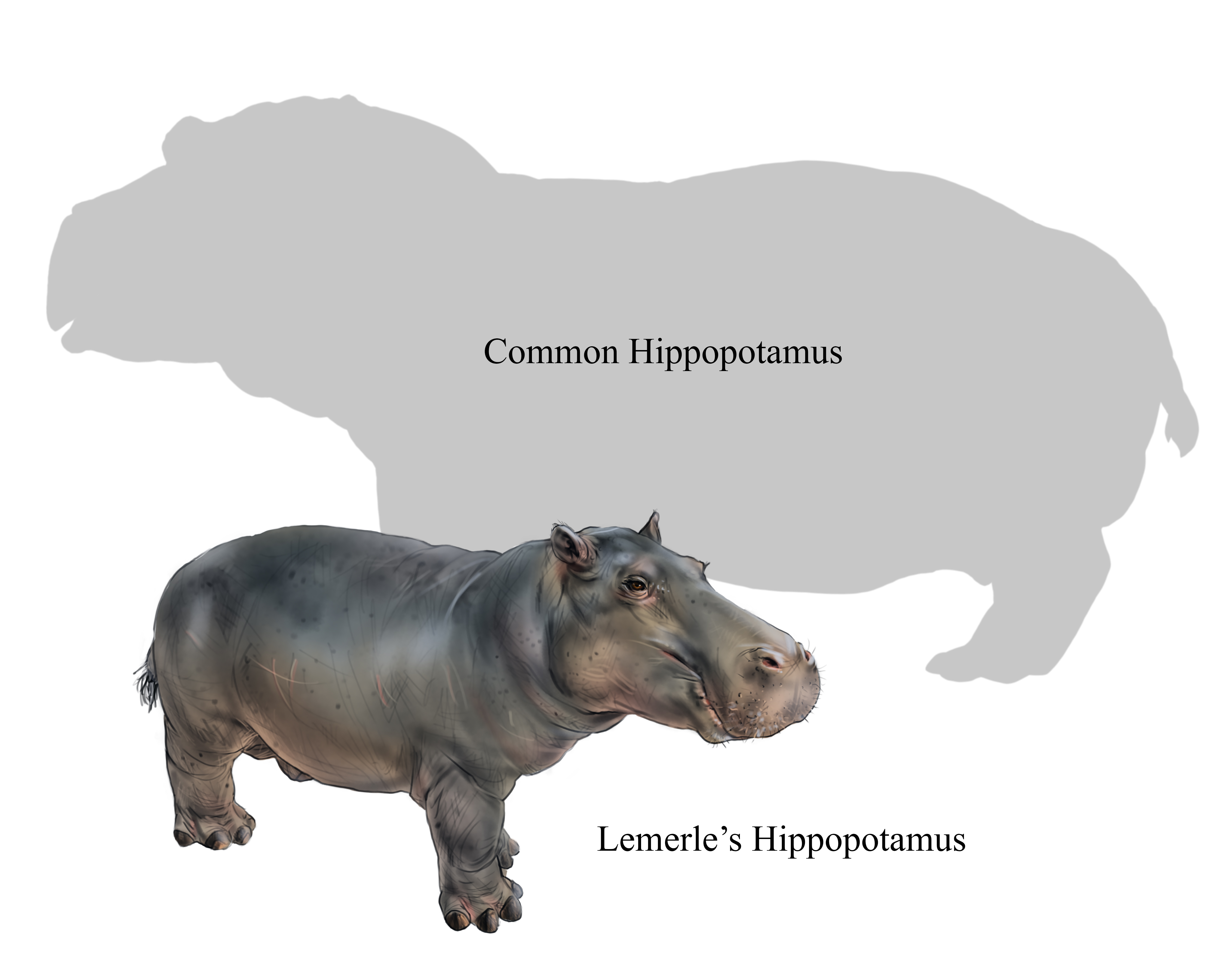Hippopotamus lemerlei on:
[Wikipedia]
[Google]
[Amazon]
Lemerle's dwarf hippopotamus (''Hippopotamus lemerlei'') is an extinct species of Malagasy hippopotamus.

Taxonomy
Malagasy hippopotamuses were first discovered in the mid-19th century byAlfred Grandidier
Alfred Grandidier (20 December 1836 – 13 September 1921) was a French naturalist and explorer.
From a very wealthy family, at the age of 20, he and his brother, Ernest Grandidier (1833–1912), undertook a voyage around the world. At first ...
, who unearthed nearly 50 individual hippos from a dried-up swamp at Ambolisaka near Lake Ihotry
Lake Ihotry is the second largest lake of Madagascar. It is a closed saline lake in semi-arid southwestern part of Madagascar in the region of Atsimo-Andrefana. Its area varies seasonally, from 96 km2 to 112 km2.
Roads
It can be reache ...
, a few miles from the Mozambique Channel
The Mozambique Channel (french: Canal du Mozambique, mg, Lakandranon'i Mozambika, pt, Canal de Moçambique) is an arm of the Indian Ocean located between the Southeast African countries of Madagascar and Mozambique. The channel is about long ...
. In 1989, Scandinavian palaeontologist Solweig Stuenes described ''H. madagascariensis'' and ''H. lemerlei'' from these bones.
It may have descended from full-sized hippos who shrunk due to insular dwarfism
Insular dwarfism, a form of phyletic dwarfism, is the process and condition of large animals evolving or having a reduced body size when their population's range is limited to a small environment, primarily islands. This natural process is disti ...
, similar to many Mediterranean island hippos, such as with the Cretan dwarf hippopotamus
''Hippopotamus creutzburgi'', the Cretan dwarf hippopotamus, is an extinct species of hippopotamus from the island of Crete. ''Hippopopotamus'' colonized Crete probably 800,000 years ago and lived there during the Middle Pleistocene. Bones of ''H ...
or the Cyprus dwarf hippopotamus.
Description
''Hippopotamus lemerlei'' bones have been mostly discovered in the rivers and lakes (riparian
A riparian zone or riparian area is the interface between land and a river or stream. Riparian is also the proper nomenclature for one of the terrestrial biomes of the Earth. Plant habitats and communities along the river margins and banks ar ...
environments) of western Madagascar, suggesting a habitat very similar to that of the modern hippo
The hippopotamus ( ; : hippopotamuses or hippopotami; ''Hippopotamus amphibius''), also called the hippo, common hippopotamus, or river hippopotamus, is a large semiaquatic mammal native to sub-Saharan Africa. It is one of only two extant ...
of modern Africa. ''H. lemerlei'' also shared the high-placed eyes that make it easier to see while submerged.
Although a clear relative to the common hippopotamus, ''H. lemerlei'' was much smaller, roughly the size of the modern pygmy hippopotamus
The pygmy hippopotamus or pygmy hippo (''Choeropsis liberiensis'') is a small hippopotamid which is native to the forests and swamps of West Africa, primarily in Liberia, with small populations in Sierra Leone, Guinea, and Ivory Coast. It has bee ...
(''Choeropsis liberiensis''). The largest specimens were long and tall.
Bones of ''H. lemerlei'' have been dated to about 1,000 years ago (980±200 radiocarbon years before present.
Paleoecology

Diet
''Hippopotamus lemerlei'' and contemporary ''Aldabrachelys
''Aldabrachelys'' is the recognised genus for the Seychelles and Madagascan radiations of giant tortoises, including the Aldabra giant tortoise (''Aldabrachelys gigantea'').
Naming
This name is problematic in that the type specimen is actually r ...
'' tortoises were the dominant grazers in Madagascar. Malagasy hippos in general, however, were less grass-specialised than the mainland African hippo.
Extinction
Although there have been no remains dating to within the last thousand years, the hippopotamus has been surprisingly common in Malagasy oral legends. In different regions of Madagascar, stories were recorded of the , the , the , and the , all animals that resembled hippopotamuses. The strength of these oral traditions led theInternational Union for Conservation of Nature
The International Union for Conservation of Nature (IUCN; officially International Union for Conservation of Nature and Natural Resources) is an international organization working in the field of nature conservation and sustainable use of natu ...
(IUCN) to classify ''H. lemerlei'' as recently extinct (going extinct some time after the year 1500).
At least seven hippopotamus bones show unequivocal signs of butchery, suggesting that they survived until humans arrived on Madagascar, perhaps coexisting with humans for about 2,000 years. It is also possible that over-hunting by humans led to their extinction.
See also
*''Hippopotamus madagascariensis
''Hippopotamus madagascariensis'', the Madagascar or Madagascan dwarf hippopotamus, is an extinct species of hippopotamus, endemic to the island of Madagascar. Known only from bones, it is believed to have gone extinct sometime after 1500. It was ...
''
*''Hippopotamus laloumena
''Hippopotamus laloumena'' is an extinct species of hippopotamus from Pleistocene and Holocene Madagascar, making it the oldest of Malagasy hippopotamus. ''H. laloumena'' was much larger than other Malagasy hippopotamus, but was still somewhat s ...
''
References
{{Taxonbar, from=Q1191360 Extinct hippopotamuses Holocene extinctions Extinct animals of Madagascar Mammal extinctions since 1500 Mammals described in 1989